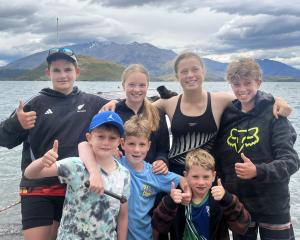Many of us will only ever see the whio or blue duck on the $10 note, but a Wanaka man is hoping to find them on the Young River near Makarora this spring.
For more than 20 years, Paul van Klink has been contracted by the Department of Conservation to survey the number of whio and their eggs in the high country rivers of Fiordland and the West Coast.
This year, Wanaka Forest and Bird branch members want to find out if the whio, or blue duck, can be found in the Young River, a tributary of the Makarora River, and are hosting a talk by Mr van Klink later this month to raise funds for the research.
Mr van Klink is one of only six dog handlers authorised to conduct the whio or blue duck surveys with a dog.
He said he trained 7-year-old Hoakie to find the nests without hurting the birds and she has been accompanying him on his field trips for the past six years.
''I can tell by her posture and behaviour when she's found something as she goes into stealth mode, crouching down and leaning forward.''
The springer spaniel Border collie cross has been known to walk 20 kilometres a day and ''keep walking the rivers until she finds something''.
Mr van Klink said whio had disappeared from South Canterbury and eastern Otago, but their numbers were holding in predator-controlled areas on the West Coast and Fiordland.
Whio rested during the day and the nests were all in the bushes out of the rivers or under boulders so it was impossible to find a nest without a dog.
He also collected eggs from wild nests early in the breeding season to allow the pairs to nest again and hatch and rear their own ducklings.
The eggs were artificially incubated, hatched and reared and released into a predator-controlled area at 12 weeks.
Mr van Klink said he enjoyed the work, as the whio was an ''iconic'' bird of the South Island and unlike other birds allowed people to get quite close to them.















